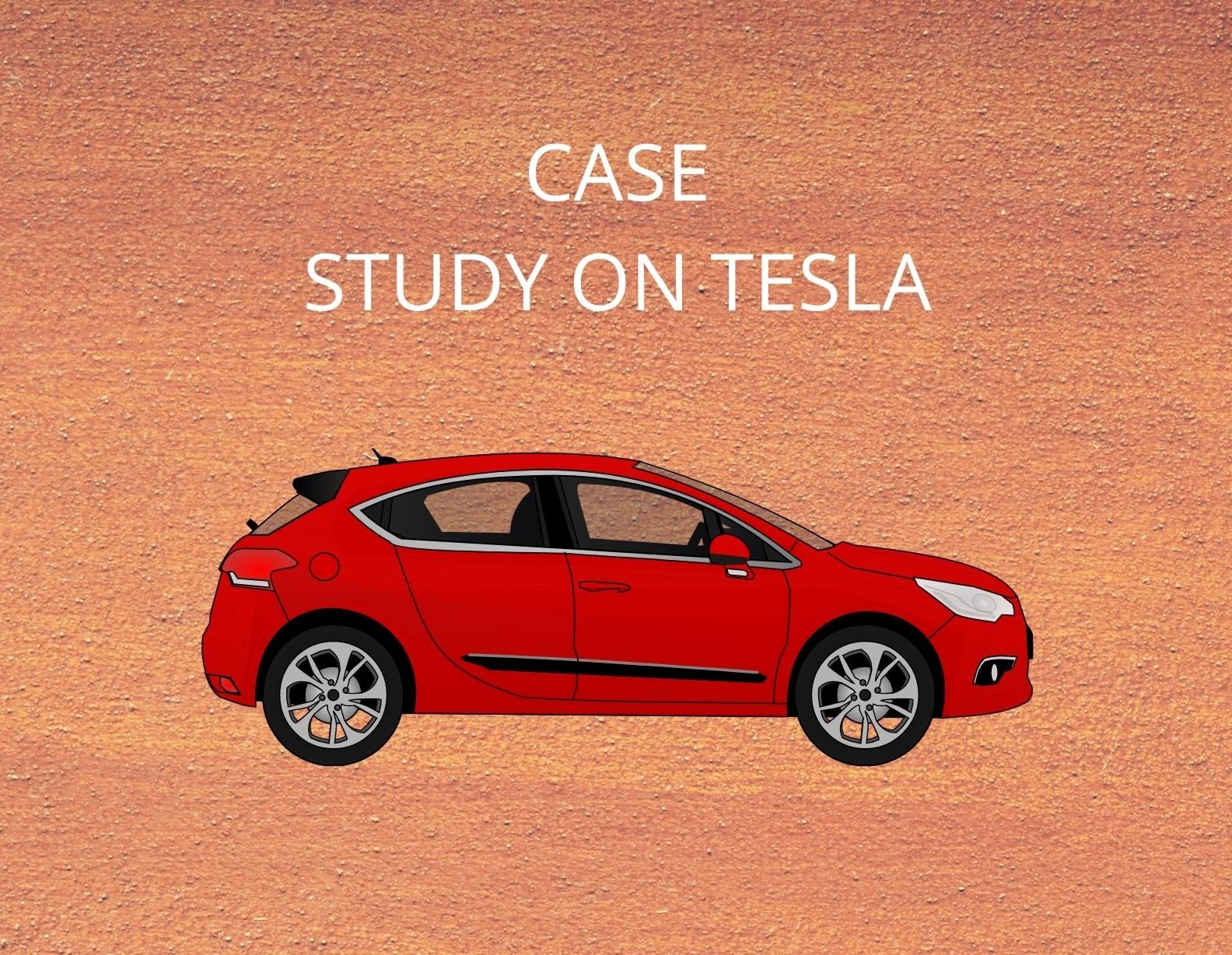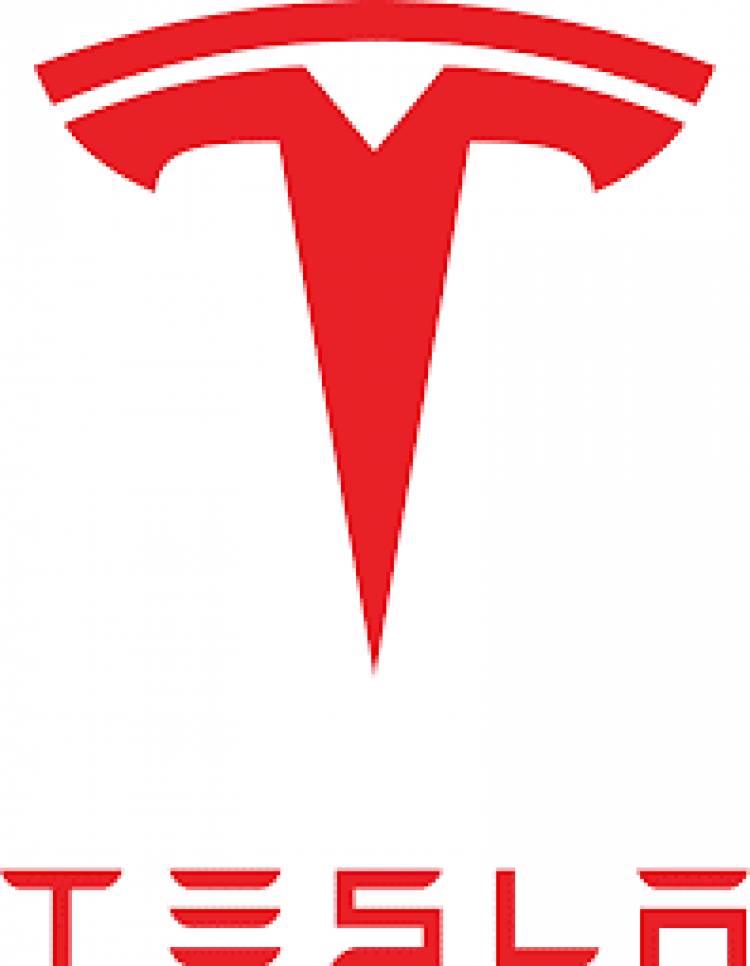CASE STUDY ON TESLA
Tesla is an American Electric Automobile Manufacturer company. It was founded in year 2003 by Martin Eberhard and Marc Tarpenning and was named after Nikola Tesla. Tesla Motors was developed to invent and produce an electric sports car. The company was funded by a variety of sources, majorly through PayPal, which provided more than $30 million to the company. The first car of Tesla was released in 2008 which was a completely electric Roadster car.

CASE STUDY ON TESLA
INTRODUCTION:
Tesla is an American Electric Automobile Manufacturer company. It was founded in the year 2003 by Martin Eberhard and Marc Tarpenning and was named after Nikola Tesla. Tesla Motors was developed to invent and produce the electric sports car. The company was founded by a variety of sources, majorly through PayPal, which provided more than $30 million to the company. The first car of tesla was released in 2008 which was a completely electric Roadster car. The company claimed that the car can achieve 245 miles (394 km) on a single charge and it could achieve a speed of 0 to 60 miles (96 km) per hour in less than 4 seconds and had a top speed of 125 miles (200 km) per hour. The body of the car was made of carbon fiber which made it a very light weighted car. The vehicle’s electric motor was based on obtaining power by lithium-ion cell and could be recharged from a standard electric outlet.
JOURNEY OF TESLA IN AUTOMOBILE SECTOR:
In 2012 Tesla discontinued production of the Roadster to work on its new Model S sedan. The Model S Sedan came with three different battery options, which provided a good result of estimated ranges of 235 or 300 miles (379 or 483 km). The battery option which contained the highest performance gave an acceleration of 0 to 60 miles (96 km) per hour in over 4 seconds and had a top speed of 130 miles (209 km) per hour. The Roadster had its batteries at the front of the car, the Model S had its batteries underneath the car, which provided a benefit of extra storage space in front and improved handling of the car while driving as it had a low center of gravity. At the beginning of 2012, Tesla started building stations by the name Supercharger in different parts of the world for designing techniques for charging batteries quickly and with no extra cost to owners of tesla. Tesla launched its car named the Model X in 2015. The Model X consisted of a battery range of 295 miles (475 km) and provided seating for up to seven people. With cars, the company also got involved in solar energy products. The company bought the solar panel company named SolarCity in 2016. In 2017 the company changed its name to Tesla, Inc., to show the world that the company no longer just restricted to cars.
TESLA’S LOGO:
Tesla's logo is like none another logo in this world as it turns out that there's more to it than what simply is visible to a common man. To a common man, Tesla’s logo looks like simply a stylized "T" which looks like a reference to the company's products. The main reason for such a logo is to represent the cross-section of an electric motor. The logo seems that it is referring to the main body of the "T" which represents one of the poles sticking out of a motor's rotor. The second line over the top which represents a section of the stator describes the Tesla logo in a circle with the top of each "T" facing outward. The logo matches the logo of SpaceX, which is a venture of Tesla’s CEO, Elon musk and builds and design rockets, and contracts to send payloads into orbit. The innovative "X" in the logo of SpaceX represents a rocket trajectory. Both the logos were created and designed by RO-Studio a design firm based in New Jersey.
To know more details-
INTELLECTUAL PROPERTY OF TESLA:
The company has created an impressive portfolio of patents for electric cars and associated infrastructure. The company has been a part of a number of legal battles in respect of the intellectual property. In 2013, Tesla Motors was a part of a legal battle with point SET. The allegation by pointset stated that the infringement of patent concerned involves a ‘method and system for setting and forming programmable features of a motor vehicle.’ The plaintiff stated that ‘The company is willing to offer a one-time redressal, which will be a fully-paid licensing flat fee of $500,000' that ‘will include both past and future use of the technology.’ In response to such a claim, Tesla Motors brought a declaratory judgment of patent non-infringement in the United States District Court for the Northern District of California. Tesla Motors requested a judgment.
The decisions taken by Tesla Motors has been an idealist one for the patent reform movement. Tesla Motors although has not abandoned its intellectual property entirely. The company has just allowed access to ‘good faith’ uses of its patents which still leaves the chance of the company taking reasonable action against ‘bad faith’ uses of its patents in the market. The company has always been in battles over other forms of intellectual property.
The Patent Pledge taken by the company allows the potential for companies to utilize the technology protected by Tesla’s patent portfolio. Tesla is the provider of over 350 U.S. patents including a wide range of technology, from thermal management systems to door handles. However, companies having the intention to use Tesla’s patent should always consider whether to use Tesla’s patented technology and should carefully make sure several key restrictions found in the Pledge. The Pledge states that to state that any party is acting in good faith by using patents of Tesla as long as they have not:
- Assisted others to assert or have gone through a financial stake in any assertion related to Tesla’s Patents;
- Challenged or helped others challenge or had a financial stake in any challenge to any Tesla’s Patent;
- Marketed or sold off any knock-off product.
These conditions have great legal and business consequences for a company using Tesla’s patented technology.
Technical differences Faced by Tesla:
Tesla’s Model S was unlike anything else on the road. Since its production was introduced and launch in 2011 it saw an instant industry achievement for automotive display integration. There was a scope left for only two physical buttons on the console which had different uses such as one was used for the hazard lights and another one for the glove compartment release.
Manufacturing differences Faced by Tesla:
The company Decided to bring changes up in the supply chain and start borrowing from the electronic manufacturing services model of production which was used as a standard practice in the consumer electronics industry. With respect to this Decision, Tesla is very close to being a technology company than a traditional automobile maker. The company contracted with a leading EMS provider according to what they had planned to invent its center infotainment system, instrument cluster, and several other systems in the Model S. This concept required Tesla to internalize a large quantity of the hardware and software development, as well as the systems integration work.
Development differences Faced by Tesla:
Tesla has always had a competitive edge over its auto industry rivals in design innovation from the time they came into the market. Situated on the top of the world for technological innovation, Tesla was not only capable to construct its vision of mobility in Silicon Valley but also was able to recruit employees from many of the leading technology companies to design, create and build the car in their company.
Service differences Faced by Tesla:
With innovation in Tesla’s technology world was introduced with some very important services. At the top of the list is the emergence of over-the-air software updates which were formed from vehicle recalls, which Tesla provided for free Model S owners. This functionality has created a lot of positive press in favor of the company.
Powertrain differences Faced by Tesla:
The most important component of Tesla’s Model S is its electric propulsion system, which consists of a motor, battery, gearbox, and drives inverter. The battery is used a microprocessor-controlled lithium-ion unit which was available in two sizes.
BY- GAURAV GUPTA












